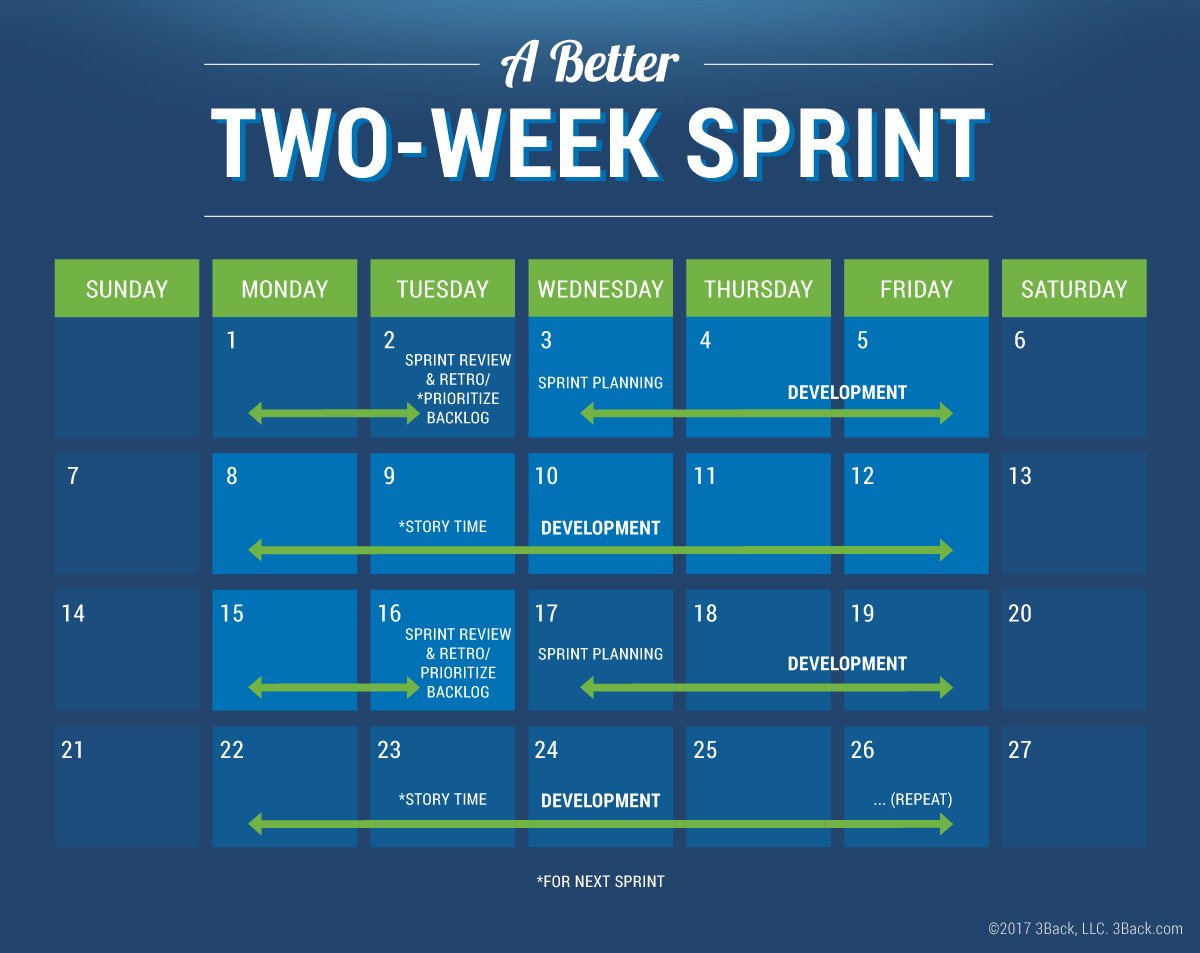Starting. It’s on all of our minds as we work through the first week of the new year. The concept of starting brings to mind one of the most frequently asked questions I receive when I am both training and coaching. When should you start a Sprint?[1] And, the question’s inevitable counterpart, when should you finish a Sprint? The answers I give are consistent. I encourage Organizations and Teams to follow the Lean Principle[2] of building-in quality; that is, make everything as unlikely to break as possible. When it comes to Sprint boundaries, regardless of the length of the Sprints, the least likely candidates are starting on Mondays and ending on Fridays.
Why Shouldn’t You Start a Sprint on a Monday and End on a Friday?
There are several reasons why Monday-Friday Sprint boundaries are suboptimal. In the United States, at least, most holidays fall on Mondays, almost certainly assuring disruption of Sprint Planning[3] at least a few times every year. And while ending Sprints on Fridays might seem to offer the prospect of a nice break in between Sprints, the all-too-common refrain from the Team at the Sprint Review[4] is: “Oh yeah, we’re done with everything, but we just have a little testing/coding/cleanup, etc., to finish over the weekend.” Uh-oh.
The Mid-Week Fix
Fortunately, there is an extremely simple method of fixing these (and many other) common problems resulting from Monday-Friday Sprint boundaries: start and finish in the middle of the week. I personally like starting fresh with Sprint Planning on Wednesday mornings and wrapping up with the Sprint Review and Retrospective[5] on Tuesday afternoons. Using this Sprint boundary template immediately remedies the Monday-holiday disruption. Finishing the Sprint on Tuesday afternoon — with the Retrospective as the last thing the Team does, always, without fail — very neatly eliminates “we’re done, but we’ll finish over the weekend” syndrome as well.
Another benefit of the Wednesday-Tuesday Sprint cycle is that it supports adherence to an oft-violated Agile principle[16]: sustainable pace. As a coach, I am not about to encourage or even allow teams to get into the habit of working weekends between Sprints. The most effective way I have discovered to deal with this problem is simply to make it impossible: there is no weekend or other exploitable time between Sprints.
Closing out each Sprint on Tuesday with the Retrospective provides the Team with the full experience of accomplishment and closure, of finishing the work of one Sprint before moving on to the next. Indeed, I invariably find that Teams are anxious to get started on the next Sprint and welcome the opportunity to start fresh the very next morning
Looking for more tips to get a better start to your new year?
We’ve got training for that.
As Always. Stay Agile.
Notes and Sources
1-5 “Sprint,” “Lean Principle,” “Sprint Planning, “Sprint Review,” “Retrospective.” ScrumDictionary.com. Accessed December 3, 2017. https://scrumdictionary.com/.
6 Principles behind the Agile Manifesto. Accessed December 03, 2017. http://agilemanifesto.org/principles.html.


